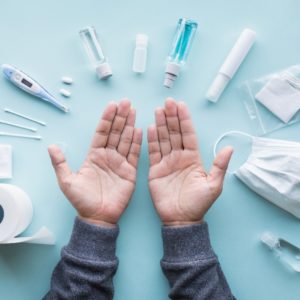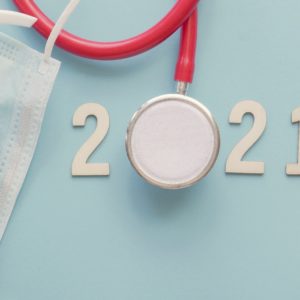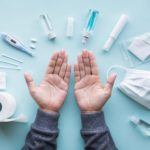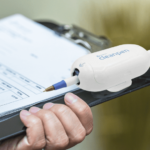Both inpatient and outpatient medical facilities must take measures to prevent infection from spreading, especially since studies show that healthcare associated infections are one of the top causes of death within the United States.[1] Infection control is a priority and human and fiscal resources should be made available to protect patients from the spread of germs when healthcare is provided. Use these tips for infection prevention in your medical facility to bring infection rates down
Tip #1 – Implement Infection Control Training for Facility Personnel
According to the CDC, medical facilities need to implement infection control training for facility personnel, ensuring that personnel are trained in infection prevention policies.[2] All health care personnel should be educated in the basic practices and principles for spreading infections, including training in patient and health care personnel safety. Not only should new personnel members receive this training as part of their orientation to the medical facility, but all personnel should repeat infection control training regularly.
Tip #2 – Follow Good Hand Hygiene Procedures
Following good hand hygiene procedures offers medical facilities one of the simplest ways to prevent the spread of bacteria. Medical facilities must develop good hand hygiene policies that include proper hand washing or using alcohol-based rubs before any contact with patients.[3] Good hand hygiene procedures also include washing hands before and after using the restroom or after contact with contaminated surfaces or patients. Posting policies to remind personnel, as well as visitors, of hand hygiene policies, may prove helpful as well.
Tip #3 – Ensure Personal Protective Equipment is Used
Personal protective equipment should be used to reduce the risk of spreading germs in medical facilities while also ensuring that health care personnel are protected from contact or exposure to infectious agents. Examples of personal protective equipment that facilities should use include respirators, face shields, gloves, goggles, face masks and gowns. Personnel should be trained to select the correct form of protect equipment based upon the specific medical situation. Care should be taken when donning and removing this equipment and hands should always be washed after removing personal protective equipment.[4]
Tip #4 – Establish Policies for Environmental Cleaning
The CDC also notes that medical facilities should develop policies for environmental cleaning, ensuring that environmental surfaces are disinfected to reduce the spread of germs within the facility. Environmental cleaning professionals should focus on surfaces most likely to become contaminated and the cleaning and decontamination of spilled infectious materials should be taken care of promptly.
Tip #5 – Disinfect Reusable Medical Equipment
Facilities must ensure that reusable medical equipment is properly disinfected before using it again. While the disinfection of some equipment, such as surgical equipment, is obvious, many medical personnel members fail to remember to disinfect other reusable items, such as stethoscopes. According to WebMD, a stethoscope’s diaphragm may become covered with antibiotic-resistant, potentially deadly bacteria, according to recent research.[5] Cleanint offers a solution to this problem, providing Cleanstethoscope, which disinfects the diaphragm of the stethoscope between each use to eliminate bacteria that may spread sickness from patient to patient.
[1] Aug. 11, 2011, “Spread of Infection in Health Care Facilities” http://www.thirdage.com/medical-care/spread-of-infection
[2] May 2011, “Guide to Infection Prevention for Outpatient Settings: Minimum Expectations for Safe Care” target=”_blank”http://www.cdc.gov/HAI/settings/outpatient/outpatient-care-gl-fundamental-elements.html
[3] May 22, 2012, “4 Tips on Surgery Center Infection Control from Industry Experts”http://www.beckersasc.com/asc-quality-infection-control/4-tips-on-surgery-center-infection-control-from-industry-experts.html
[4] 2007, “2007 Guideline for Isolation Precautions: Preventing Transmission of Infectious Agents in Healthcare Settings” http://www.cdc.gov/hicpac/pdf/isolation/Isolation2007.pdf
[5] Feb. 27, 2014, “Germ-Laden Stethoscopes May Spread Nasty Bacteria” http://www.webmd.com/news/20140227/doctors-germ-laden-stethoscope-may-spread-nasty-bacteria








